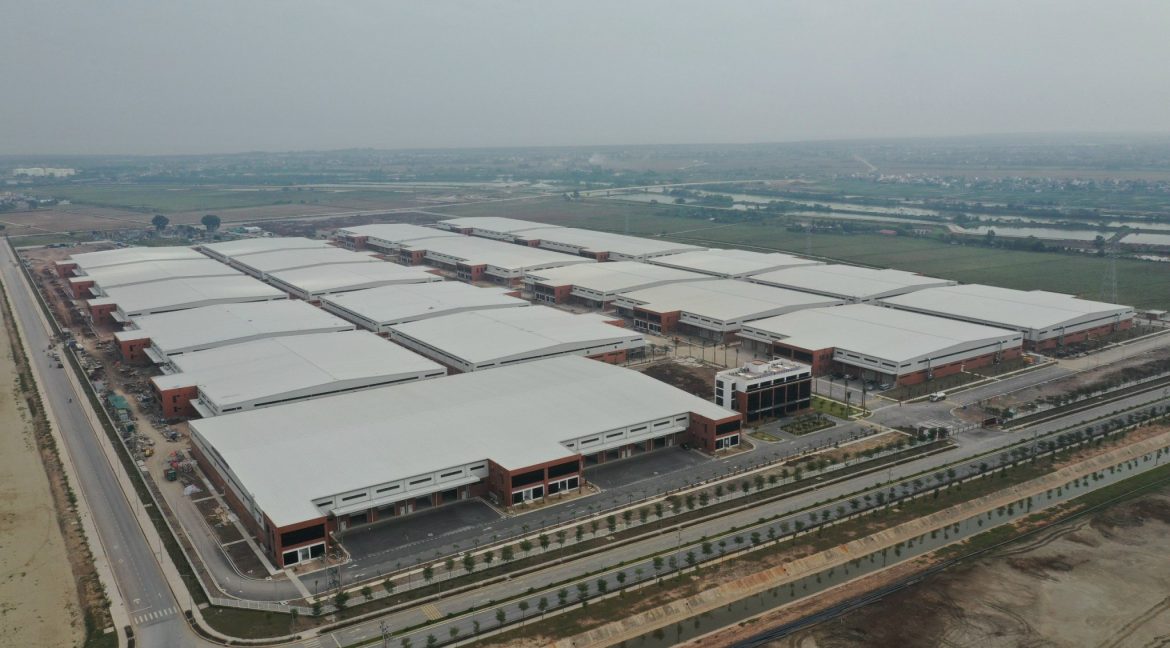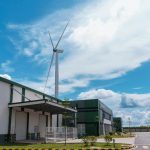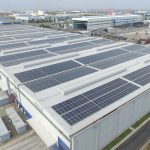Table of Contents
- 1 How to Lease a Manufacturing Facility in Vietnam: A Step-by-Step Guide for Business Success
- 2 Step 1: Understanding the Leasing Process for Manufacturing Facilities in Vietnam
- 3 Step 2: Choosing the Right Location for Your Manufacturing Facility in Vietnam
- 4 Step 3: Key Legal Considerations When Leasing a Manufacturing Facility in Vietnam
- 5 Step 4: Identifying Potential Manufacturing Facilities
- 6 Step 5: Negotiating Lease Terms and Finalizing the Contract
- 7 Step 6: Setting Up Your Manufacturing Facility
- 8 Step 7: Starting Operations and Managing Your Factory
- 9 Conclusion
How to Lease a Manufacturing Facility in Vietnam: A Step-by-Step Guide for Business Success
Leasing a manufacturing facility in Vietnam is a significant decision for any company seeking to expand or establish a presence in Southeast Asia. As a rapidly developing economy with a booming manufacturing sector, Vietnam presents an array of opportunities for businesses across various industries. However, understanding the leasing process, including the legal, financial, and operational considerations, is critical to ensuring a smooth transition and maximizing the potential of your business in the country.
This detailed, step-by-step guide will provide you with all the essential information you need on how to lease a manufacturing facility in Vietnam. From choosing the right location to negotiating lease terms and setting up your factory, we’ll cover all the aspects of leasing a manufacturing facility in Vietnam, ensuring your business is compliant and well-positioned for long-term success.
Step 1: Understanding the Leasing Process for Manufacturing Facilities in Vietnam
Leasing a manufacturing facility in Vietnam involves several key steps that must be followed to comply with local laws and regulations. Understanding these steps will help you streamline the process and avoid potential pitfalls.
Key Steps to Lease a Manufacturing Facility in Vietnam:
-
Know the Local Market: Research the local manufacturing landscape and consider how your business will fit into the broader market. Take time to evaluate different regions of Vietnam that may be suitable for your factory.
-
Research Industrial Parks and Economic Zones: Many manufacturers choose to lease facilities in industrial parks or special economic zones (SEZs) that are already equipped with the necessary infrastructure, such as utilities, transportation links, and security.
-
Understand Local Laws and Regulations: Each region of Vietnam may have different regulations regarding land leasing, zoning, environmental standards, and business operations. Understanding these regulations is crucial to ensure your business complies with the law and operates smoothly.
-
Consult Local Experts: It’s advisable to consult with local real estate agents, legal advisors, and industry professionals to get a better understanding of the leasing process. They can help you navigate the complexities of the local market and guide you in finding the right property.
Step 2: Choosing the Right Location for Your Manufacturing Facility in Vietnam
One of the most critical decisions when leasing a manufacturing facility in Vietnam is selecting the right location. Vietnam offers a range of industrial parks and regions that are perfect for manufacturing businesses, but each location has unique advantages. Here are some factors to consider when choosing the right location for your factory:
-
Proximity to Key Markets and Suppliers: Consider the logistics of getting raw materials, components, and finished goods to and from the factory. Major manufacturing hubs such as Ho Chi Minh City, Hanoi, Hai Phong, and Binh Duong offer excellent access to suppliers, transportation networks, and markets.
-
Availability of Skilled Labor: Access to a skilled workforce is crucial for manufacturing businesses. Industrial areas like Bac Ninh, Dong Nai, and Hanoi have large pools of skilled labor, particularly in sectors like electronics, textiles, and automotive manufacturing.
-
Infrastructure and Connectivity: Assess the quality of infrastructure, including road access, ports, rail networks, and airports. Manufacturing facilities in well-connected regions will benefit from lower transportation costs and more efficient logistics.
-
Costs: Leasing costs vary by location. Major industrial hubs tend to have higher rental rates, but they also offer better access to infrastructure, labor, and markets. On the other hand, locations in less developed areas may offer more affordable rent but could pose logistical challenges.
Step 3: Key Legal Considerations When Leasing a Manufacturing Facility in Vietnam
Leasing a manufacturing facility in Vietnam comes with a set of legal requirements that must be met, especially if you are a foreign investor. It’s essential to understand these legalities to ensure your lease agreement is valid and your business is fully compliant with Vietnamese laws.
Legal Aspects to Consider:
-
Foreign Investment Law: Vietnam’s Foreign Investment Law outlines the guidelines for foreign businesses looking to lease property in the country. Depending on the type of investment (wholly foreign-owned enterprise, joint venture, etc.), the law provides specific regulations and requirements for property leasing.
-
Business Registration: Before you can lease a facility in Vietnam, your company must be registered in the country. You may need to establish a representative office, a joint venture with a local partner, or a wholly foreign-owned enterprise (WFOE), depending on your business structure.
-
Zoning and Land Use: Verify that the property you are interested in leasing is in an area designated for industrial use. Zoning laws in Vietnam vary by region, so it’s important to confirm that the facility meets the requirements for manufacturing activities.
-
Lease Agreement: The lease contract must comply with Vietnamese laws and clearly outline all terms, including rent, lease duration, and the responsibilities of both parties. It’s recommended to hire a local legal expert to review the lease agreement before signing to ensure that it protects your business interests.
Step 4: Identifying Potential Manufacturing Facilities
Once you understand the legal framework and the ideal location for your factory, it’s time to start looking for properties. Here’s how to identify suitable manufacturing facilities in Vietnam:
-
Work with Local Real Estate Agents: Local real estate agents can help you find manufacturing facilities in your chosen area. They can also guide you through the leasing process and provide valuable market insights.
-
Visit Potential Properties: After identifying potential properties, schedule on-site visits to inspect the facilities. Look for essential factors such as the condition of the property, availability of utilities, security, and the overall suitability of the space for your operations.
-
Talk to Other Tenants: If possible, speak to other tenants in the industrial park or area to get a sense of their experiences and gain insights into the property’s suitability for your business.
-
Check Available Amenities: Ensure the property has the necessary infrastructure and utilities, including electricity, water, telecommunications, and waste management. Some industrial parks provide these services as part of the lease, while others may charge additional fees.
Step 5: Negotiating Lease Terms and Finalizing the Contract
Negotiating favorable lease terms is one of the most important steps when leasing a manufacturing facility in Vietnam. Below are key elements to consider during the negotiation process:
-
Rental Rates: Understand how the rent is calculated—whether it’s in US dollars or Vietnamese dong—and compare rates between different locations. Don’t forget to consider any additional costs such as utilities, maintenance, and taxes.
-
Lease Duration and Flexibility: Most manufacturing leases in Vietnam are long-term, ranging from 3 to 10 years. Negotiate lease terms based on your business’s growth projections and future needs. Ensure that the lease offers flexibility for expansion, if necessary.
-
Exit Clauses: Make sure that the lease contract includes exit clauses that allow you to terminate or relocate the lease if needed. These clauses should be clearly defined and reasonable.
-
Operating Costs: Clarify who will bear the costs for utilities (water, electricity), waste management, maintenance, and other operational expenses. It’s important to know these costs upfront to avoid surprises later on.
-
Review the Lease Agreement: Before signing, ensure that the lease agreement complies with zoning, environmental, and safety regulations. The contract should also outline the deposit requirements, payment schedule, and the responsibilities of both parties.
Step 6: Setting Up Your Manufacturing Facility
Once you have signed the lease, it’s time to set up your manufacturing facility. Here’s what you need to do to ensure a smooth transition:
-
Renovation and Furnishing: Depending on the condition of the property, you may need to make renovations or upgrades to meet your business needs. This could include adding machinery, modifying the layout, or installing specific equipment.
-
Infrastructure and Utilities Setup: Set up the essential utilities, such as electricity, water, internet, and waste management. Ensure that the factory space meets your operational requirements.
-
Hiring Local Workforce: Start the recruitment process by working with local recruitment agencies or job boards to find suitable candidates for your factory. Vietnam has a skilled labor force, particularly in manufacturing-heavy regions.
-
Compliance with Labor Laws: Ensure that your company complies with local labor laws, including employee contracts, minimum wage requirements, social insurance, and health and safety regulations.
Step 7: Starting Operations and Managing Your Factory
Once the setup is complete, it’s time to start operations. Here’s how to get your factory running smoothly:
-
Supply Chain Management: Establish your supply chain with local suppliers, distributors, or other partners. Vietnam has a robust manufacturing ecosystem, making it easy to source raw materials and components.
-
Quality Control: Implement quality control measures to ensure that your production meets both local and international standards. Set up processes for monitoring and improving product quality.
-
Government Relations: Establish good relationships with local authorities and government agencies to help navigate regulations, obtain permits, and resolve any issues that may arise.
Conclusion
Leasing a manufacturing facility in Vietnam requires careful planning, research, and compliance with local regulations. By following this comprehensive step-by-step guide, you can successfully lease a manufacturing facility in Vietnam and set your business up for long-term success. With the right location, legal framework, and operational setup, Vietnam offers tremendous opportunities for manufacturers across various industries.
For detailed inquiries and site visits, contact Lusac Real today!
📞 Phone: +84-903-009-609
📧 Email: [email protected]
🌐 Website: https://www.lusacreal.com/



